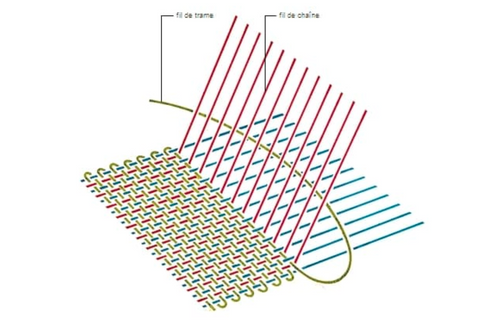If you're shopping for a bike bag, you're probably overwhelmed with technical information that's hard to understand. And yet, you shouldn't need a degree or a dictionary to choose the right bag!
In the hope of not boring you too much, we present the different characteristics of fabrics and how to compare them as simply as possible! In short, a textile course for dummies!
We'll break it all down here to help you choose what's best for you!
A quick note before you start
Textiles are as wonderful as they are complex, and it's hard to compare one fabric to another. The way they are tested differs from company to company, supplier information is sometimes incomplete and materials are constantly evolving.
How do you compare fabrics?
For each fabric, several elements are compared:
- 1. Denier count;
- 2. Water resistance;
- 3. Abrasion resistance;
- 4. Tear resistance;
- 5. Weight.
1. What is a Denier?
A denier is a unit of measurement, the thickness of the yarn fibre used to make the fabric.
So, not all fabrics of the same type are the same. The thickness of the yarn will make it more or less resistant.
For example, Cordura is available in 1000 Denier or 500 Denier and is not as strong.
The type of fabric will also have an impact on the grade: for example, 450D nylon is more resistant than 600D polyester.
An important note! There are several ways to measure a fabric's strength. Denier is one of the most popular measurements, but it's not the only one that matters. Thread count (T) and weight in grams per square meter (gsm) are also indicators. It's hard to keep track, we know!
There are 300, 500 and 1000 Denier fabrics. To give you an idea of the scale, a 1000D fabric is considered very resistant.
2. How do I compare/measure waterproofness?
Waterproofness is measured in pounds per square inch (PSI). So it's water pressure in pounds (lbs) for each square inch of fabric.
Did you know that ''the more resistant a fabric is to water under pressure, the higher its waterproof rating will be? ''
To give you a waterproofness scale, water-resistant fabrics can withstand between 3 and 5 psi of water pressure, the equivalent of a short shower of light rain.
On the other hand, a highly waterproof fabric such as a Gore-Tex® shell can withstand around 40 psi of water pressure.
This level of waterproofing is necessary when you're kneeling on snow or carrying a heavy pack in the rain, as it puts extra pressure on the fabric.
3. What is abrasion resistance?
A textile can resist abrasion, i.e. wear and tear caused by friction.
To perform the test, 2 abrasive wheels are placed on the surface of the fabric (a bit like sandpaper on a sandblaster). The wheels are then rotated on the fabric at a fixed speed.
After a set number of revolutions or cycles, the surface of the sample is examined and visually assessed.
So if a sample passes the test of 2000 versus 1200 rotations, it will be more resistant to abrasion.
*ASTM D3884 is a standard issued by the American Society of Testing and Materials (ASTM).
4. What is tear strength?
It's the force required to create or continue a tear, in the weft or warp direction, under specific conditions...
Pssst: what's the difference between warp and fill?
Warp is like the skeleton of a piece of fabric, it's the threads that run the length of the fabric. The weft is the thread that crosses the warp threads perpendicularly, following the warp threads back and forth.
Warp and fill are the two basic components used in weaving to transform yarn or thread into fabric.

Fabric generally tears progressively along a line. The resistance of the sample to tearing is calculated in Pounds (lbs).
5. What is weight?
Very simply, it's the weight in pounds of fabric for a defined surface area, say 1 square meter.
You're still there! Congratulations. For even more information, here's a text on the fabrics used at Arkel.
_______________________
Image credit: Larousse https://www.larousse.fr/encyclopedie/images/Fils_de_cha%C3%AEne_et_de_trame/1006554






